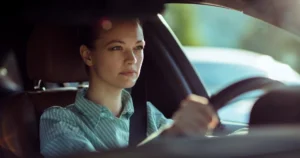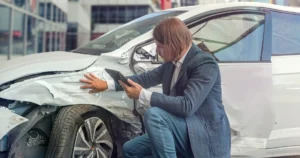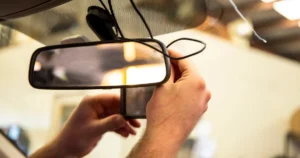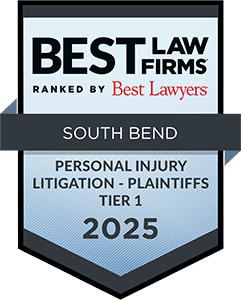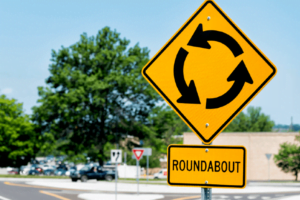 Roundabouts are used in place of traditional intersections. They are generally considered safer, and they help cut down traffic delays.
Roundabouts are used in place of traditional intersections. They are generally considered safer, and they help cut down traffic delays.
Unfortunately, roundabouts are still less common than traditional intersections. This means fewer drivers know the rules while driving through a roundabout. Failure to understand traffic laws means drivers are more likely to cause a collision.
If you were injured by a negligent driver in a roundabout, call our auto accident attorneys in South Bend today. We offer a free legal consultation. If you choose to work with us, there are no upfront fees. We do not get paid until you do.
Below, we discuss roundabout traffic laws and what factors into liability after a crash.
How is Traffic Regulated in a Roundabout?
There are still rules for driving in a roundabout, even though there are no traffic lights or signals. These rules include:
- Slowing down before entering the roundabout
- Vehicles entering the roundabout must yield to those already in it
- No switching lanes while in the roundabout
- Drivers must yield to anyone in the crosswalk before entering the roundabout
- Anyone in the crosswalk must yield to vehicles already in the roundabout
Many people forget or do not know all these rules. Ignorance of the rules in a roundabout is not an excuse that can shield a driver from liability if a crash occurs.
If the driver who caused your collision is denying liability, you need an attorney on your side who can help prove him or her responsible. That means thoroughly investigating the claim to determine whose negligence caused the collision.
What Factors May Determine Negligence in a Roundabout Crash?
To prove negligence, you must establish you were owed a duty of care. Every person behind the wheel of a car must act in a reasonable manner to avoid causing injuries to others. Then you must prove there was a breach of that duty that resulted in your injuries.
In a roundabout car accident case, all drivers owe each other a duty to understand the rules for driving in a traffic circle. Pedestrians and cyclists are expected to know the rules too. Those who fail to adhere to the rules of a roundabout can be considered negligent.
Negligence in a roundabout crash can mean:
- There was a right of way violation – When a driver entering the roundabout fails to yield to traffic already in the roundabout or people in the crosswalk
- Yielding to those who do not have the right of way – When a driver in the roundabout yields to pedestrians attempting to cross the street or other vehicles trying to enter the roundabout
- Getting into the wrong lane upon entering the roundabout – When a driver gets into a lane that does not have an exit to the street he or she is turning onto and then attempts to switch lanes while in the roundabout
No two accidents are the same, so negligence in a roundabout collision can look different. These are just some of the most common examples. Sometimes speeding, distracted driving and impaired driving are factors in the crash.
In some cases, a third party may bear some fault for the collision. For example, a pedestrian or cyclist may bear partial responsibility if he or she crossed the road while it was not safe to do so. Even though drivers owe a greater duty of care to pedestrians and cyclists, pedestrians and cyclists can be guilty of negligence.
Can I Pursue Compensation for a Crash in a Poorly Designed Roundabout?
Poorly designed road cases are rare. Most accidents are caused by a negligent driver, so the person’s liability insurance usually pays compensation.
However, you may be able to pursue compensation from a government entity if a poorly designed roundabout caused your accident.
A poor roundabout design can include:
- Improper use of yield signs – when a yield sign is not visible to the person who is supposed to yield the right of way; for example, anyone in a crosswalk should be warned traffic in the circle does not yield
- Two lanes in the roundabout but only one allows for a clean exit – There are some roundabouts with multiple lanes in the circle but only one lane provides a smooth exit for each street. This can cause a back up of traffic at each entry point. It can also lead to more drivers attempting to change lanes while in the roundabout.
- Lack of or inappropriate speed limits – Drivers should reduce their speed when attempting to enter a roundabout, but if there is no sign alerting them to this it could cause an issue. At the same time, not posting a slow enough speed could also result in drivers entering the traffic circle too fast.
There may also be an issue with the design of the roundabout itself. For example, it may not be a perfect circle, resulting in confusion for drivers. The placement of the roundabout may also be an issue. Roundabouts should be placed in low traffic areas, not on major highways.
Talk to a Lawyer About Your Claim. Call Us Today
Whether a driver’s negligence or poor road design caused your collision in a roundabout, our attorneys are prepared to help.
We do not charge you anything up front or while we work on your case. The initial consultation to discuss your claim is also free. There is no risk to you.
Call (574) 444-0741 today.

